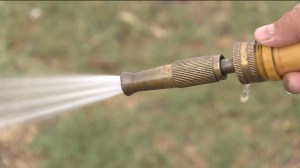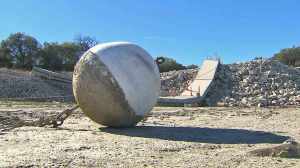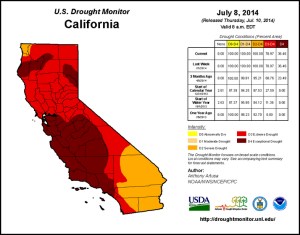Amid a historic drought affecting the entire state of California, state regulators on Tuesday approved emergency conservation measures that will allow water wasters to be fined up to $500 per day.

The measures, directed primarily at outdoor water use in urban areas, were called a “a minimum level of effort in this time of emergency” in a fact sheet on the proposal from the State Water Resources Control Board.
The regulations ban the “direct application of water to any hard surface for washing.” They were approved at a board meeting in Sacramento Tuesday evening, the Los Angeles Times reported.
Also banned under the proposed regulation was outdoor watering that causes runoff onto adjacent nonirrigated areas, including sidewalks and streets.
Washing vehicles must have to be done with a hose that has a shut-off nozzle, under the regulations.
And fountains or other decorative water features must be turned off unless they use recirculated water.
Violations will considered an infraction of the law that could bring fines of up to $500 per day. The regulations give local agencies the authority to impose the fines.

The proposal came about six months after Gov. Jerry Brown declared a drought state of emergency and urged Californians to cut water use by 20 percent.
But data from a conservation report presented to the water board Tuesday showed state water use actually rose 1 percent in May 2014 over previous years.
The increase in water use was attributable to Southern California coastal communities and the far northeastern area of the state; water use declined in other areas, the report showed.
And the Los Angeles Times’ review of data for Southern California’s three largest cities showed water use had actually gone up over the last year, the newspaper reported.
As of late April, all of California was considered in moderate drought for the first time in at least 15 years. By mid-May, the whole state was considered in severe drought, according to data from the U.S. Drought Monitor.

And as of early July, nearly 80 percent of the state was considered in extreme or exceptional drought, the most intense levels of drought in the federal monitor’s ranking. All but two of 12 of the California’s major water storage reservoirs were at less than 50 percent capacity as of Monday, state data shows.
“More than, 400,000 acres of farmland are expected to be fallowed, thousands of people may be out of work, communities risk running out of drinking water and fish and wildlife species are in jeopardy,” the California water board stated in its fact sheet.
The state’s economy was predicted to lose $2.2 billion in 2014 due the drought, most of that in agricultural losses, according to a University of California, Davis report released Tuesday.
The proposed regulations under consideration Tuesday were also set to impose restrictions on local water supply agencies, requiring them to implement so-called Water Shortage Contingency Plans that restrict users’ outdoor water use.
Urban water suppliers could face fines of up to $10,000 per day for violating cease-and-desist orders generated by the regulations.
Many local water suppliers already have restrictions in place for their customers.
The new rules, approved by the five-member water board, were slated to go into effect Aug. 1.
Water Board’s emergency action & @UCDavisWater report are a reminder to Californians that there’s more work to do. #SaveOurWater #CAdrought
— Jerry Brown (@JerryBrownGov) July 16, 2014
More Video:






